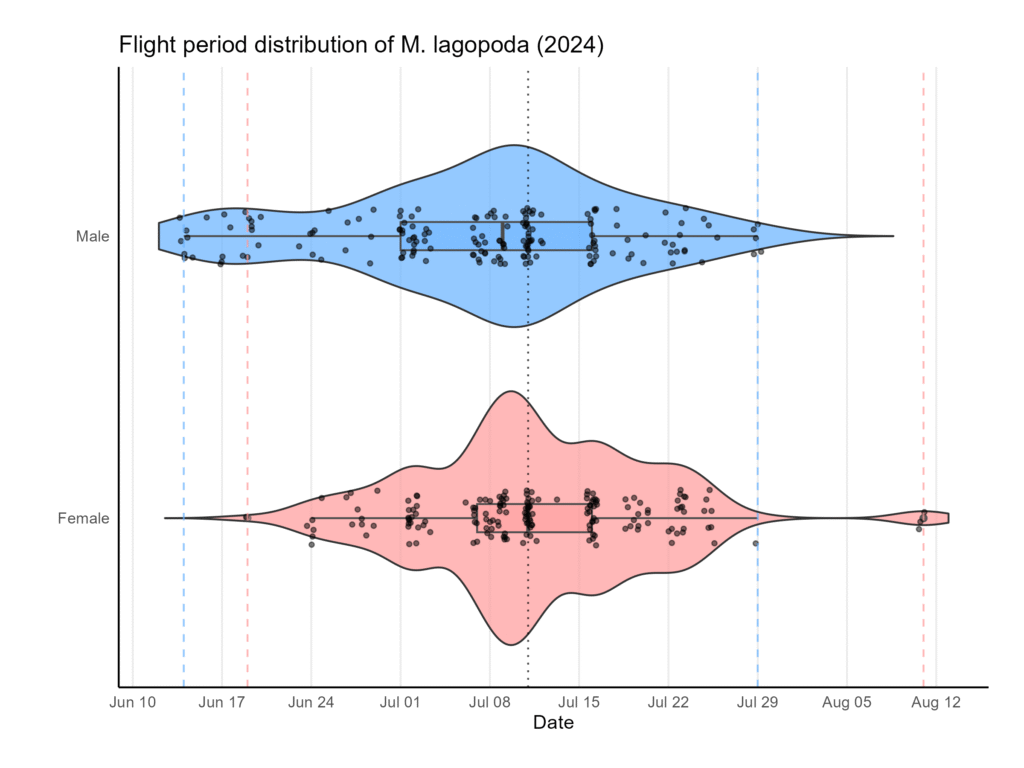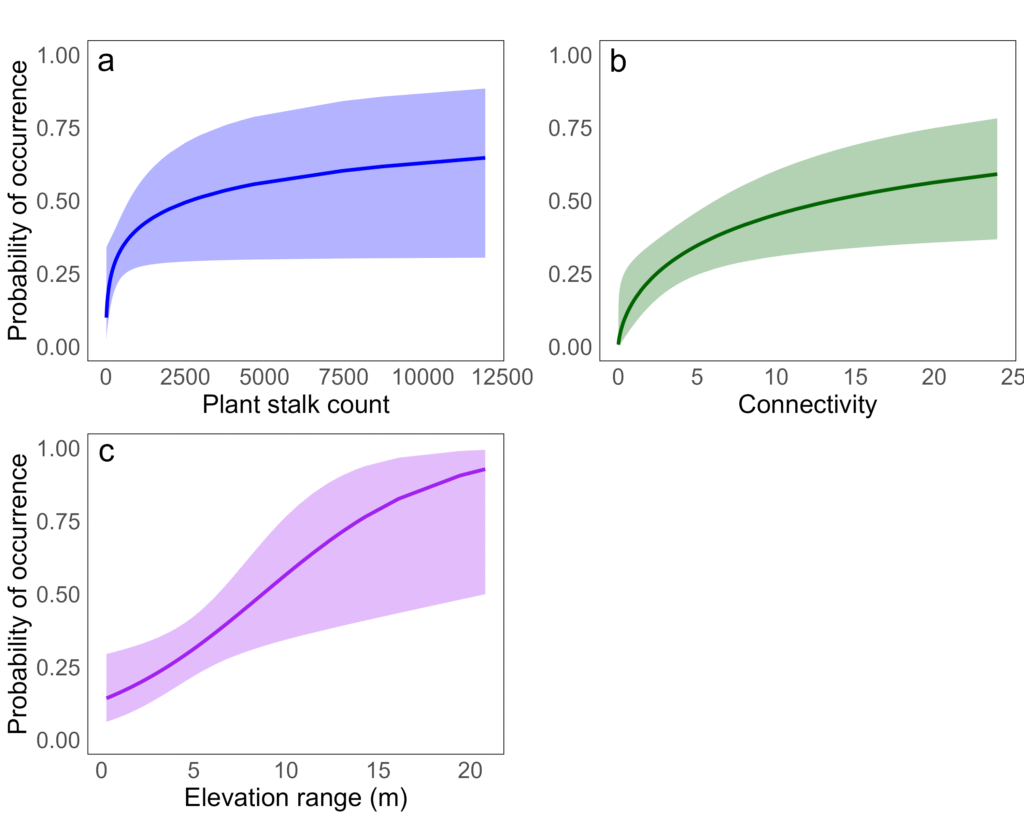Patch characteristics and distribution
From the initial survey, 118 distinct habitat patches were identified across the landscape. The mean number of Centaurea scabiosa stalks per patch was 944, with the highest count reaching 7,000 stalks at a single site. Among the 118 patches, 55 contained bees, with female bees present in 38 patches. The maximum female bee count at one site was 14 individuals.
Phenology patterns

Factors influencing bee occurrence
The presence of female M. lagopoda was significantly influenced by three key factors:
- Connectivity (p=0.005): The strongest predictor of female bee presence was the population-weighted connectivity index, which accounts for both distance between patches and population size within source patches.
- Host Plant Abundance (p=0.05): Sites with greater host plant counts were more likely to contain female bees. Statistical analysis revealed a threshold of approximately 1,034 plant stalks needed for a 50% probability of female occurrence.
- Elevation Range (p=0.01): Larger variation in elevation was positively correlated with bee presence, independent of the other factors.

Factors influencing bee abundance
For patches where bees were present, local abundance was determined by:
- Host Plant Abundance (p<0.001): The relationship was non-linear, with bee numbers increasing more slowly at sites with very high plant counts.
- Elevation Range (p<0.001): Higher topographic variation correlated with larger maximum counts of female bees, showing a strong linear relationship.
- Notably, connectivity did not significantly influence local bee abundance, suggesting that while connectivity determines whether bees colonize a patch, it does not affect population size once established.
